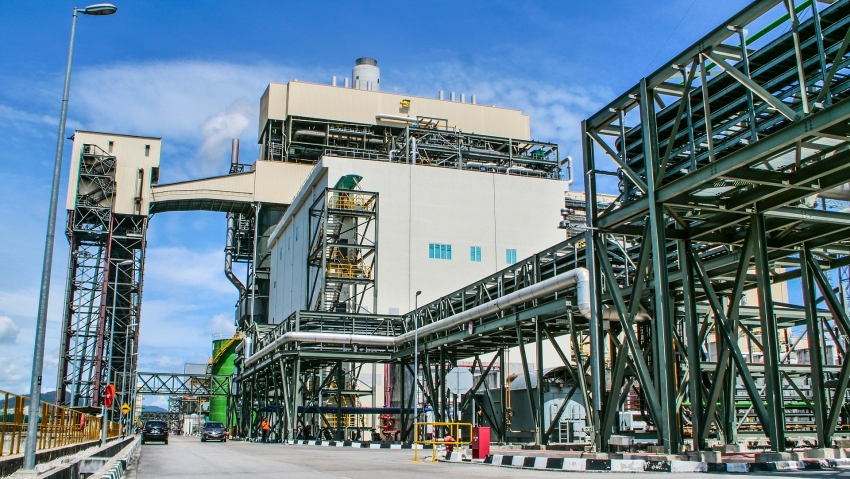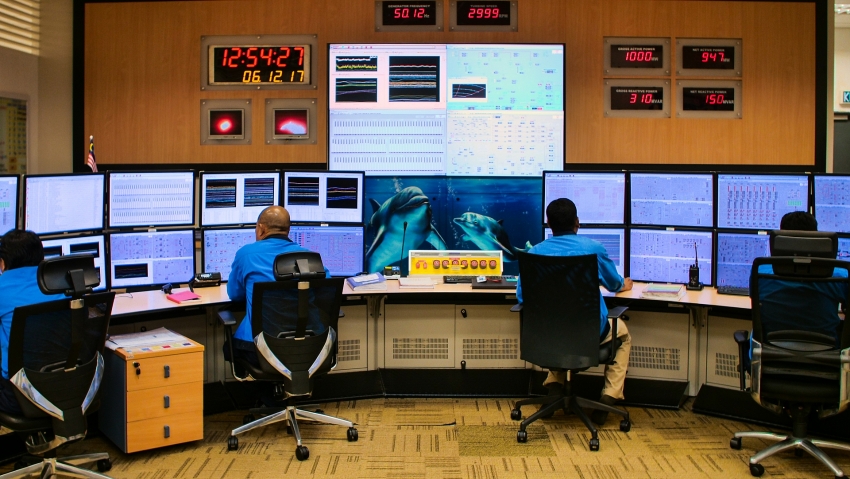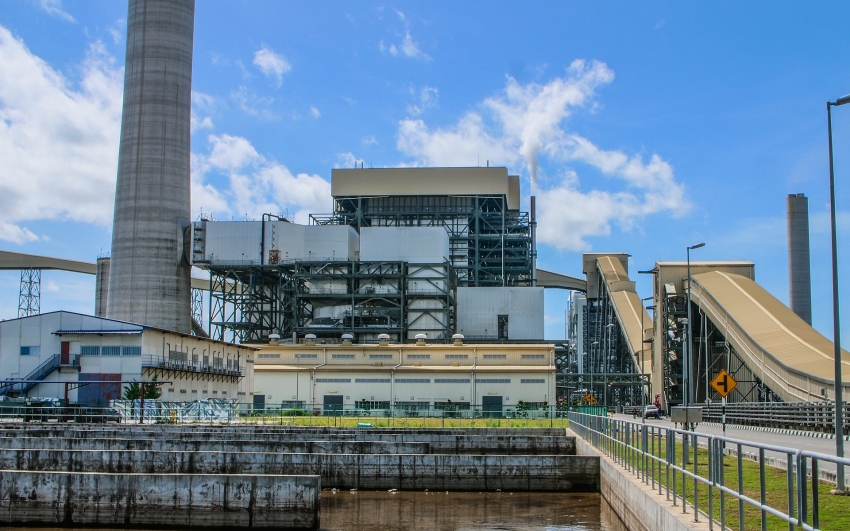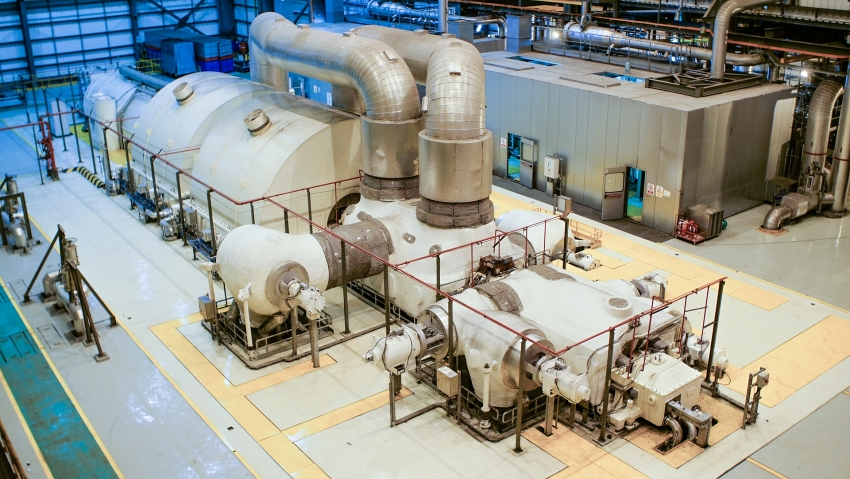GE's ultra-supercritical technology transforms Malaysian energy scene
 |
Powering on: unfathomable depths under the surface
If you live in a place where the lights turn on with a flip of a switch, you might take electricity for granted. You might not think much of the technology, systems, networks, and government bodies that make power, and specifically electricity, possible.
However, there is a great deal going on behind the light switch that you should be aware of because electricity is fundamental to modern life, it keeps us safe and healthy and helps economies around the world grow.
As the World Bank reminds us, “Energy is inextricably linked to every other sustainable development challenge.” But today, there are still more than 1 billion people around the world who do not have access to electricity, and even more who do not have access to reliable electricity.
As organisations and governments work together to improve access to electricity, the way we produce electricity is shifting. The fact is that the rapidly decreasing cost of renewable energy technologies can help countries expand access to power with a very low carbon footprint. But it is also a fact that renewable energy technologies cannot meet this demand alone.
Stable, flexible, and affordable power (that can be dispatched when required) is also needed to improve access to energy and provide reliable power to countries and regions around the world which need it the most.
Around the world, governments define countries’ energy strategies based on a variety of factors, including locally available resources, emissions commitments that they have made, energy security, and the cost of electricity, just to name a few. This is a delicate balancing act that governmental bodies play, and each country’s approach is unique.
 |
The UK, for example, has a commitment to reduce its dependence on coal and is building new nuclear plants to deliver the power they need to sustain their economy and meet their COP21 commitments.
Germany, on the other hand, has a real mix. They have a strong commitment to renewables, but they also have coal plants to help provide flexible power and support their commitment to renewable—in fact, the highest efficiency coal plant in operation today is in Germany. Turkey is also adding high-efficiency coal and new nuclear plants to meet their growing energy needs.
Make no mistake, renewables are growing at strong rates and are here to stay. In fact, they are changing the way traditional sources of power need to operate so they can be flexible enough to ramp up and down efficiently to respond to the renewable sources of power, while renewables will continue to grow and play an important role—but so will coal, nuclear, and gas.
Over the next decade, fossils fuel will still take up 60 per cent of global power generation and will be critical to providing that baseload power. Renewables are expected to remain the fastest growing segment but will still make up less than 50 per cent. Also, 85 per cent of the electricity growth will come from emerging markets.
With nearly 900 billion tonnes of reserves, coal power remains an integral part of today’s energy mix that includes renewables as well as gas power. Currently, 40 per cent of the world’s electricity comes from coal power and that amount is predicted to decrease to 30 per cent over the next decade.
 |
How does Manjung 4 fit this global context?
The World Energy Outlook forecasted Malaysia’s energy demand to almost double between 2015 and 2040, with coal becoming the primary fuel in the country’s energy mix. This fuel landscape will impact the country’s per capita CO2 emissions, but structural changes—like new, efficient steam power plant developments—are expected to help reduce Malaysia’s carbon intensity by 33 per cent.
The Manjung 4 Power Plant is Southeast Asia’s single largest ultra-supercritical unit. It is a 1,000MW ultra-supercritical coal-fired power plant owned and operated by Tenaga Nasional Berhad Janamanjung (TNBJ) in Malaysia.
GE was the EPC contractor for the power plant, together with its consortium partner, CMC Engineering, and it successfully delivered the project in four years and within budget. Located in the Manjung complex in the state of Perak, TNBJ’s Manjung 4 is a critical part of Malaysia's energy diversification policy and it produces enough electricity to power nearly two million households in Malaysia.
“The world, and especially Malaysia, requires accessible, reliable, and sustainable energy and we are happy to have partnered up with GE as our technology partner,” said Datuk Shamsul, managing director of TNB Janamanjung. “We have known GE for a long time. GE has the proven technology, a solid EPC experience, as well as a good project management team, and they have been providing many solutions all over the world.”
 |
Manjung 4 was built in only four years and began commercial operations on April 14, 2015. Using GE’s ultra-supercritical combustion technology, the plant can generate electricity with lower emissions because it is up to 10 per cent points more efficient than the global average of coal-fired power plants. Each additional percentage point in efficiency reduces carbon dioxide emissions by 2 per cent. Additional efficiency also lowers plant operating and overall lifecycle costs.
“We at TNBJ are proud to have put up the first ultra-supercritical (USC) and largest coal-fired power plant in Southeast Asia, serving the needs of 2 million households throughout Malaysia. We pledge our efforts to generate power to the nation, creating a better future for all of us,” said Shamsul.
During its operation, Manjung 4 has met or exceeded its original performance commitments to deliver more value to TNB. In addition to its high efficiency, the plant has also achieved extremely high availability, particularly during the second year of operation. The plant has achieved 94.5 per cent availability in its first two years of operation, exceeding its target rate, while allowing TNB to reliably deliver full base load to the grid.
“With more efficient power generation (elevating the efficiency of the plant to 40 per cent and reducing coal usage by about 3 per cent), we ensure that the cost of generating electricity is minimised and remains friendly to the environment and communities nearby,” Shamsul added.
Manjung 4 has also benefitted from minimised unplanned downtime, with an unplanned outage rate of only 2.4 per cent as of the end of August 2017, compared to the world standard of 4 per cent. Higher availability and less unplanned downtime adds up to more value for TNB Janamanjung.
“We are aware of the need to sustain the environment we are in and we will do our best to safeguard and sustain it. The use of USC technology enables Manjung 4 to convert energy more efficiently, burning less coal for more power, while complying with emission standards,” said Datuk Shamsul. “The plant also meets stringent environmental standards set by the World Bank and the Malaysian Department of Environment (DOE).”
Manjung 4 has GE’s air quality controls systems (AQCS) technology which significantly reduces SO2 and NOx emissions by up to 70 per cent compared to other Manjung units. GE’s Seawater Flue Gas Desulfurisation (FGD) system achieves more than 90 per cent SO2 removal, setting Manjung 4 at 200mg/Nm3 which is significantly below the World Bank standards of 750 mg/Nm3. These solutions implemented at Manjung 4 will lead to a total 4-5 per cent emissions reduction compared to previous units.
 |
Smarter and cleaner steam power
As the world’s need for accessible power grows, coal power plants will continue to be a vital way to meet this demand. However, to limit emissions, it is essential that coal-fired power plants provide maximum efficiency and rely on leading air quality and pollution control technologies.
“In today’s energy sector two things are critical: having the best technology to help our customers meet their needs in a changing landscape and having the best partners to build plants that help economies grow and make day to day life easier for millions of people,” said Andreas Lusch, president and CEO of GE’s Steam Power business.
For the past 100 years, GE’s Steam Power business has been a leader in cleaner, more efficient coal power technology, driving the market from supercritical to ultra-supercritical and now to advanced ultra-supercritical technology, as well as providing the most advanced AQCS technology to remove up to 99 per cent of local air pollutants.
With teams in more than 70 countries around the world, and 30 per cent of the world’s steam turbine capacity and 30 per cent of the world’s boilers, GE is helping growing economies like India, China, Latin America, Southeast Asia or Africa deliver affordable power, local jobs, and better infrastructure.
“The world, and especially Malaysia, requires accessible, reliable, and sustainable energy and GE will provide the solutions," said Shamsul.
What the stars mean:
★ Poor ★ ★ Promising ★★★ Good ★★★★ Very good ★★★★★ Exceptional
Related Contents
Latest News
More News
- 72 nations sign landmark Hanoi cybercrime convention (October 26, 2025 | 18:00)
- UN Secretary-General commends Vietnam’s global leadership (October 26, 2025 | 09:00)
- APEC finance ministers convene to tackle regional challenges (October 22, 2025 | 17:31)
- Rewiring global trade: ASEAN’s rise as supply chain hub (October 17, 2025 | 11:40)
- Vietnam attends first World Nuclear Week Forum in Russia (September 26, 2025 | 10:50)
- Vietnam attends 69th session of IAEA General Conference (September 16, 2025 | 10:00)
- ADB, WB pledge over 12 billion USD for ASEAN power grid, renewable energy projects (August 15, 2025 | 14:18)
- Lowy Institute proposes AI-based tobacco control solutions for ASEAN (August 15, 2025 | 14:14)
- Cloud computing policy to position Malaysia as regional hub by 2030 (August 15, 2025 | 14:11)
- Thailand, Cambodia suffer numerous cyber attacks (August 05, 2025 | 16:19)

 Tag:
Tag:


























 Mobile Version
Mobile Version